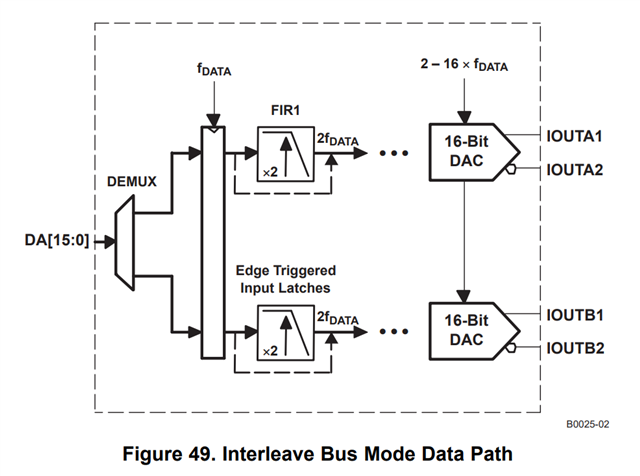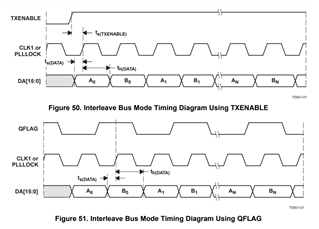Other Parts Discussed in Thread: DAC8822,
Hello?
As the title, in order to reduce the number of buses, only one DATA BUS is used and inquiring about the control method of IOUTA and IOUTB.
In the datasheet, I confirmed how to output both DA[15:0] and DB[15:0] inputs to IOUTA in an interleaved manner, but there does not seem to be a way to split one input into two outputs.
The current target application requires controlling four outputs, so we plan to use two of these devices.
However, wiring all of the buses for each bus is quite burdensome due to the number of connector pins (64-lines(=16x4) or more).
I would like to check whether there is a way to use it by connecting it in parallel with a bus.
If this product doesn't work, I tried to use the DAC8822, but the DAC8822 seems slow and I don't know the sampling rate or on/off switching time, so I hope this is possible.
Please reply.
Thank you.



